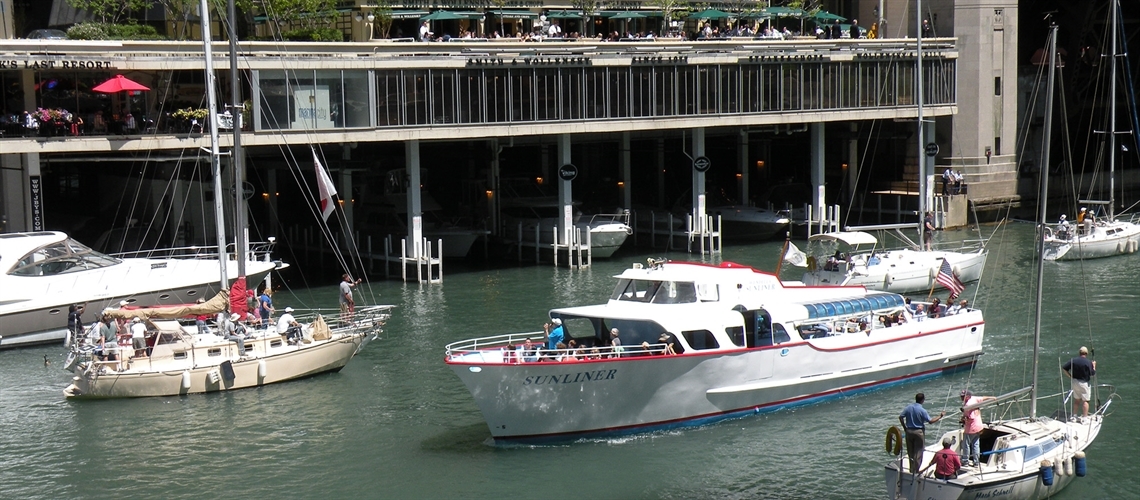Inviting
2020 Goal: Safe rivers and riverfronts

John W. Iwanski
Parts of the Chicago River, particularly the Main Stem, are often busy enough that safety becomes a concern.
Through increased signage, security patrols and public education, the rivers and riverfronts will be safe 24-hour destinations.
“A great deal more needs to be done to ensure everyone is able to safely enjoy our rivers and riverfront.”
—Michael Borgström, Wendella Boats; Chicago Harbor Safety Committee; Great Rivers Chicago Leadership Commission
Signs that provide information about right-of-way laws, no wake zones, boating etiquette and combined sewer overflow locations and effects will be posted on bridges and shorelines, educating river users about the rules of on-water navigation and safety. As the number of non-licensed boaters and paddlers continues to grow, posting this information will reduce the number of accidents and near-misses, making the rivers more enjoyable for everyone. Signage will be most comprehensive along the Main Stem of the Chicago River and extend north to North Avenue and south to Western Avenue. Signs also will be installed near public boat launches and marinas. Rental companies for motorized and non-motorized watercraft will distribute standardized safety information approved by the Chicago Harbor Safety Committee.
310 mentions of safety concerns in public outreach
Increased and coordinated patrolling by federal, state and local agencies along highly used stretches of our rivers will ensure the well-being of visitors, day and night. Patrols should use proactive techniques to counsel operators of both motorized and human-powered crafts on safe traffic management practices, and a small squad of “kayak cops” could patrol the most highly paddled stretches of the river.
Likewise, more consistent security along riverfront trails, coupled with lighting enhancements where needed and more recreational and business activity, could add “eyes on the street” and make more Chicagoans likely to use the rivers in the mornings and evenings.
Making it happen

Kate Joyce Studio
Good lighting and a steady presence of people create a safe feeling at night on the recently completed downtown Riverwalk.
- Implement the Chicago Harbor Safety Committee’s 2016 Safety Recommendations and Guide to Rules and Regulations.
- Develop a comprehensive water safety signage and education program, building off the comprehensive rivers brand.
- Conduct a lighting study that investigates needs for safety in public spaces, while mitigating light pollution impacts on habitats and wildlife.
- Convene a working group of all agencies and departments with policing responsibilities. Assess options for increasing the frequency of river and riverfront patrols within existing resources, plus ways to increase patrolling with additional resources, including deploying law enforcement via kayak, bicycle or horseback.
Key players
Chicago Harbor Safety Committee, Chicago Dept. of Transportation, U.S. Coast Guard, Ill. Dept. of Natural Resources, Chicago Police Department, Chicago Dept. of Business Affairs and Consumer Protection, MWRD, Chicago Park District, Forest Preserves of Cook County
Our rivers, our role
- Organize events for first-time paddlers in Chicago Park District lagoons or other non-navigable waterways.
- Report unsafe areas of the rivers or riverfronts to your alderman, 311 or the Chicago Police Department.
- Create walking or running clubs that use riverfront trails and increase “eyes on the street.”
Back to goals